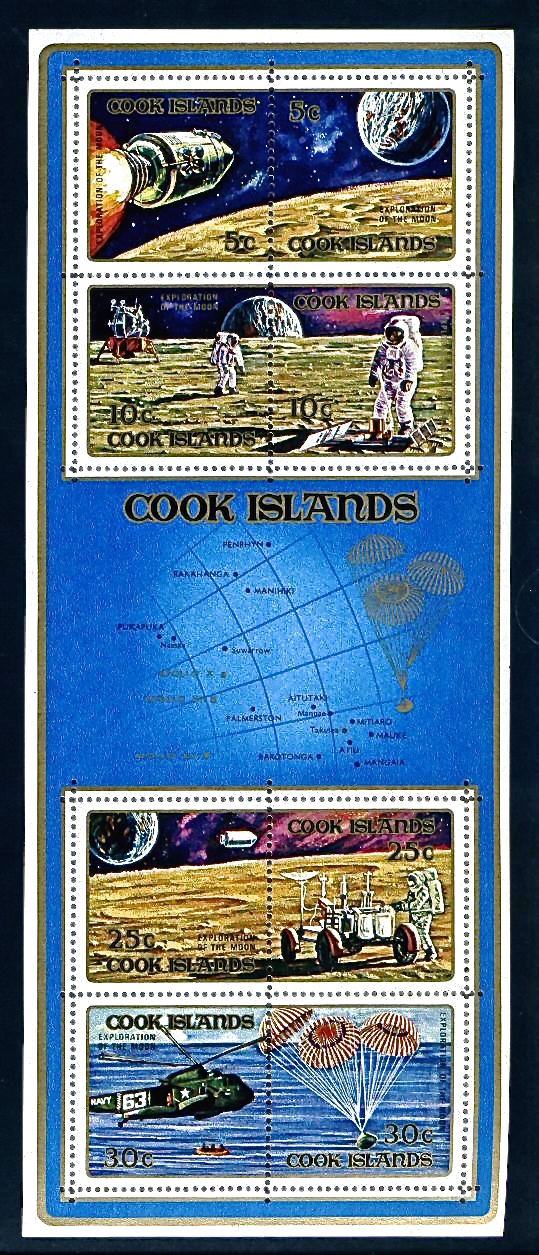 What, you my well ask, is the Cook Islands connection with the Apollo space program? The answer comes from Jean Mason, curator of the Cook Islands Library and Museum Society
What, you my well ask, is the Cook Islands connection with the Apollo space program? The answer comes from Jean Mason, curator of the Cook Islands Library and Museum Society
The Cook Islands is the only territory in the world outside of the United States within whose geographic boundaries Apollo space flights have regularly landed. The Cook Islands are fixed by statute as all islands between 6 degrees to 23 degrees south latitude and 156 degrees ad 167 degrees west longitude, an area of over 180,000 square miles (over 460,0000 sq. kms).
Two flights after the first Moon landing by the astronauts on Apollo 11, the damaged Apollo 13 splashed down safely just to the west of Rarotonga, the largest of the Cook Islands. Several other Apollo flights landed in other Cook Islands areas, or just to the north of the Cook Islands, and aircraft flew over the Cook Islands to monitor all the Apollo landings.
The astronauts of Apollo 15 named their space capsule Endeavour after the ship of Captain James Cook, namesake of the Cook Islands, and one of the later space shuttles was also named Endeavour.
Edwin ‘Buzz’ Aldrin, the second man on the Moon, who was a good friend of local resident Tap Pryor, a marine biologist and former Senator of the State of Hawaii, was a regular visitor to the Cook Islands for over 20 years.
The story of Apollo
The Apollo program began on 25 May 1961, when President Kennedy announced that men would be sent to the moon by the end of the decade. A disaster occurred in 1967 when three astronauts died in the lunar craft while training on the ground. The first practice flight was in 1968 in Apollo 7, and Apollo 8 took its crew of three astronauts round the Moon, without landing. The first landing was made in 1969. The following six Apollo flights went according to plan except for Apollo 13, which had vital equipment destroyed in an explosion during the outward journey, and had to return to Earth without landing.
The Apollo Landings on the Moon
Apollo 11: 16-24 July 1969; Mare Tranquillitatis.
Apollo 12: 14-24 November 1969; Oceanus Procellarum.
Apollo 13: 11-17 April 1970; no landing.
Apollo 14: 31 January-9 February 1971; Oceanus Procellarum.
Apollo 15: 26 July-7 August 1971; Appenine Mountains.
Apollo 16: 16-27 April 1972; Descartes crater in the lunar highlands.
Apollo 17: 7-19 December 1972; Mare Serenitatis.
A set of Cook Islands stamps was issued in the 1970s to commemorate the Apollo landings. See this display and other interesting displays at the Library & Museum Society in Taputapuatea, opposite the University of the South Pacific.
Library & Museum Society
Open Monday-Saturday 9am-1pm, and on Tuesday 4pm-6pm. Tel. 26 468





